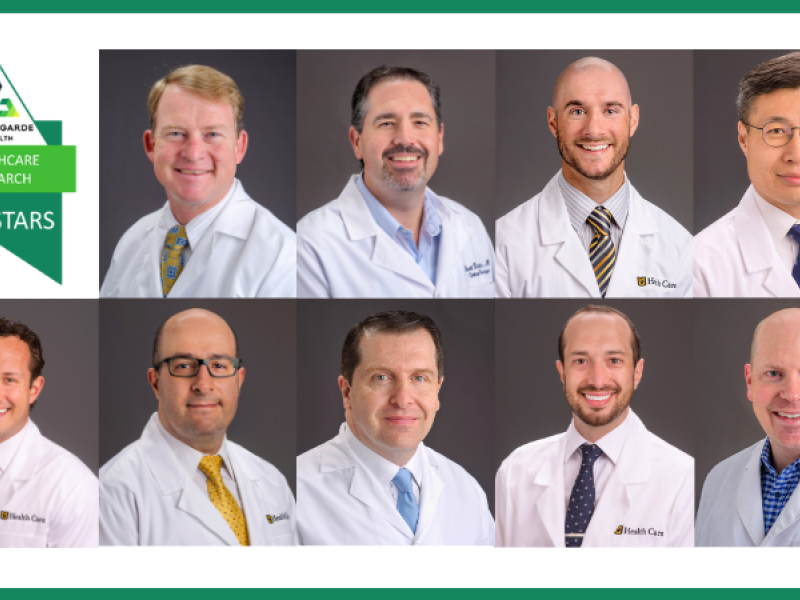Introduction
In the United States, in recent decades, there has been a change in what is considered the ideal model for the relationship between healthcare providers and patients. Paternalistic models have been replaced by models in which more emphasis is placed on respecting patient freedom and sharing decision making.
Controversy still exists, however, about which non-paternalistic model is best and how far providers should involve themselves in influencing the patient’s values, goals, and decisions.
Providers and Physicians
By the phrase “healthcare provider” we mean primary care physicians, specialist physicians, nurse practitioners, physician assistants, and others who act to diagnose and treat patient illnesses and disorders in healthcare settings. In the course of healthcare encounters patients may interact with many other clinicians such as nurses and technicians, but it is the healthcare provider who most determines the course of the therapeutic relationship.
In the past, provider-patient relations have largely been thought of in terms of “physician-patient relations.” But in recent years there has been a broadening of the kinds of people who act as providers to include other roles such as nurse practitioners and physician assistants, though people in such roles typically work under the supervision or guidance of a physician.
Certain aspects of the relationship between providers and patients are generally accepted and relatively uncontroversial. The relationship is seen as fiduciary, meaning that it is based on trust. The patient trusts the provider with his or her healthcare and the provider is expected to fulfill certain duties toward the patient. Obligations toward patients include:
- Technical competence in the provider’s area of expertise
- Acting so as avoid harming the patient (non-maleficence)
- Acting for the patient’s benefit (beneficence)
- Keeping patient information confidential (under normal circumstances)
The provider is also considered to be a professional. A profession has standards and expectations about such matters as established methods of specialized training, possession of proper certification, mastery of requisite skills, possession of authoritative knowledge, expectations of appropriate behavior and judgment, high quality of performance, devotion to the area or field of expertise, and codes of ethical conduct.
The American Medical Association Code of Ethics provides guidance on what they consider the proper relationship between physicians and patients. Besides what is mentioned above, physicians should, among other things, avoid exploiting patients, avoid engaging in sexual relations with patients, and respect the rights of patients to make their own decisions about treatment and procedures.
The Paternalistic Model
In a healthcare context “paternalism” occurs when a physician or other healthcare professional makes decisions for a patient without the explicit consent of the patient. The physician believes the decisions are in the patient’s best interests. But the control in the relationship resides with the physician rather than the patient, much as the control in a family resides with the parents and not the children. In the traditional paternalistic model it was considered acceptable for the physician to decide what to tell the patient about the actual diagnosis, and in cases of terminal disease the patient was sometimes not told the true nature of the illness (perhaps the family was told instead). Or if the patient were informed of the diagnosis, the physician might present the recommended treatment plan as the only one rather than mentioning alternatives that could be considered. Or if the patient were told of alternatives, the physician might make the recommended treatment plan seem clearly preferable in order for it to be chosen.
Paternalism occurs outside healthcare. Typical parental decisions in a family are paternal in this way – the parents pick and choose what to tell their children, present only alternatives they favor, and make the important decisions. When the government requires seatbelt use or motorcycle operator helmet use, it acts in a paternalistic way. The government in such cases believes it is acting in the best interests of the citizens, but what makes it paternalistic is that the individual is not free to control the decision (without breaking the law.)
It is inevitable that providers will act paternalistically in an innocuous sense for much of what goes on in healthcare. For example, a surgeon performing a surgical procedure on a patient will use the techniques he or she feels best fit the situation rather than asking the patient for advice or presenting choices to the patient about technique throughout the operation. Or in deciding upon medications to try to treat an infection, the provider will narrow down the field of possibilities to ones that in his or her professional judgment are likely to knock out the particular type of infection rather than presenting long lists of antibiotics to the patient so that the patient may choose. Or in deciding on what kind of continuing professional education conferences to attend or what professional literature to read, the provider will not solicit patients for advice but rather use his or her own judgment about what new knowledge and training will likely best benefit his or her patients.
Controversy about provider paternalism is not about such issues but about such matters as not presenting treatment options to patients when the medical consensus is that there are several options, or choosing among several viable treatment options without patient input, or not being honest with the patient about a diagnosis.
Arguments for Paternalism
One common argument for paternalism in healthcare is that the physician or other provider has such vastly superior technical knowledge of the medical situation -- the certainty of the diagnosis, the nature of the treatment options and possible benefits, and the risks involved - that it makes more sense for the provider to evaluate the options and make the decisions. Patients are easily overwhelmed by technical details and risk talk and are therefore not in the best position to make the decision. The patient suffering from an illness will often be in a weakened and vulnerable state and has come to the provider seeking expert advice, help, and judgment that the patient lacks.
Furthermore, any decision should be made rationally, on the basis of an objective evaluation of the facts, rather than on emotion. The patient is usually very emotionally involved and possibly frightened by all the talk of risks and uncertainties, and this might affect the patient’s judgment. The physician is less emotionally involved in the situation and can better make the right choice. In fact, upsetting information presented to the patient could harm the patient by throwing him or her into sadness and depressing, and the physician has an obligation not to harm the patient.
Some thinkers claim that it is virtually impossible for physicians not to act paternalistically because it would be impossible for the physician to present all the medical information to the patient and thus inevitably the physician’s own decisions will come into play in picking and choosing what to present to the patient. The patient can’t decide for him or herself what the physician should present about a procedure, the possible benefits, and risks, and other uncertainties.
Arguments against Paternalism
Paternalism makes two distinct assumptions:
- The provider can properly withhold important information from and make significant decisions for the patient. It is morally permissible to do so.
- The provider in fact knows what is best for the patient.
The first assumption has come under attack in recent decades through the emphasis on respect for patient autonomy. In the 1970’s the general public became aware of past abuses in medical research. In some studies in the U.S. in previous years researchers failed to honestly inform research subjects about the true nature of the research; sometimes the subjects were blatantly deceived and put at risk of significant harm. As the public became aware of such abuse, there were calls for reform in research and healthcare, and a “bioethics” movement began to talk of principles of “respect for persons” and “respect for autonomy.”
“Autonomy” is the freedom and ability to control the course of one’s own life instead of being controlled by others. Autonomy implies being able to decide of one’s own free will instead of out of external restraint or coercion or the “internal” influence of drugs, alcohol, mental illness, or other emotional factors. Some believe that autonomy requires the choice must not be crippled by the lack of significant information.
If the autonomy of a patient or subject must be respected, the physician cannot properly withhold significant information and make major decisions for the patient or subject. That means that the following paternalistic practices would be, under normal circumstances, morally impermissible:
- Failing to inform the patient of the true diagnosis
- Failing to disclose to the patient other available, acceptable treatment options and their risks
- Explicitly lying, withholding information, or being otherwise deceptive to patients
- Making important decisions for the patient instead of allowing the patient to make them (Exceptions might be made for child patients and emergency situations.)
- Presenting information or portraying options to the patient in such a manner that the patient cannot make an objective decision but will instead choose exactly what the provider wants
The second assumption of healthcare paternalism mentioned above is that the provider in fact knows what is best for the patient. There are different possible interpretations of this.
- Knowing how everyone should live life and what they should want to get out of it.
- Knowing what a particular patient wants to get out of life because of candid discussions with the patient.
- Given a patient’s own stated goals for what they want out of life, knowing what health goals (for example, freedom from chronic disease and infirmity, high state of aerobic fitness) they need to have to realize their life goals (for example, sailing around the world after retirement, seeing their grandkids graduate from college).
- Given the patient’s own stated health goals, knowing what healthy practices (diet, exercise, medication, testing) they need to adopt to reach those health goals.
The critic of paternalism could claim that when a provider makes critical decisions for a patient or withholds important information so as to influence a patient’s decisions, without involving the patient in the process, the provider seems to be implicitly assuming to know all about what type of life people in general should live and want to get out of life. But knowing all this would require settling controversial philosophical and religious questions that are not within the scope of medical expertise. The provider may know what the provider wants out of life, but the provider may not know what the patient wants to get out of life, and the provider most likely is not in a position to know what the patient should want to get out of life. For example, the provider should not simply assume that the patient would not want to be told of a terminal disease because maybe the patient would want that knowledge in order to allow him to take time to get his economic, personal, and spiritual affairs in order before death.
Rather, the critic would claim, the provider should stick to learning from the patient what the patient wants out of life and advising the patient about health goals and practices that are likely to achieve the patient’s life goals.
Non-paternalistic models
If paternalism is inadequate as the ideal model of relations between providers and patients, what should that relationship look like? Other models have been suggested to replace the paternalistic model. Two common groups of models are what we will call “technical” models and “shared-decision” models.
A technical model of the provider-patient relationship sees the provider supplying only technical medical expertise to the patient. Various versions of this type of model are called “informative,” “scientific,” “engineering,” “consumer,” etc. The physician diagnoses the disease, explains treatment options to the patient, along with anticipated benefits and potential risks, and gives the probably of favorable outcomes with each option, including discussion of which ones are most popular in the patient’s situation, but no significant time is spent discussing patient life or health goals and values, and the patient is given complete freedom to decide on their own what to do. The patient must consider what they want out of life, what risks they are willing to take, etc. and then decide what to do.
The technical type of model avoids the charge of paternalism because it does not assume that the provider should withhold information from or decide for the patient, and the provider does not presume to know what is best for the patient. But critics of technical models claim that while it might represent what we want out of an auto mechanic or a travel agent, it is probably not what most of us want from a healthcare provider. Though people may not want the provider automatically making the important decisions, they often do want to discuss treatment options with the provider in the context of a discussion about their health and life goals and values. Many patients would welcome a provider-patient discussion about what they want out of life and how to get there. They want the provider’s appraisal of the options in light of the provider’s knowledge of the patient’s goals and values for health and life. Patients may not want the provider to make the decisions, but they want advice and recommendations. They don’t want coercion, but many would welcome dialogue. So many critics see technical models as too extreme a reaction to paternalism.
A middle-ground model tries to avoid the objections to paternalism but involve the provider more in the patient’s life than would technical models. These middle-ground models are called variously “mutual autonomy,” “shared decision,” interpretive,” “collegial,” deliberative,” etc. Not all of these models are the same. Middle-ground models differ in the degree of provider involvement in discussing, elucidating, and influencing patient goals and values and making decisions. In what Emanuel and Emanuel call the “interpretive” model the physician helps the patient identify their values and explore which treatment options fit the health-related goals the patient may have. A patient with a goal of staying physically fit would be interested in those treatment options that would tend to promote physical fitness. Going a little further, on the “deliberative” model the physician actually tries to persuade the patient to change health-related values if the physician thinks the patient has the wrong ones, but the physician stops short of coercing the patient to change. So, for example, if the patient lacks the health-related goal of avoiding heart disease, and smokes and eats to excess, the provider should try to persuade the patient to adopt that health-related goal and refrain from those risky practices. Emanuel and Emanuel prefer the deliberative model over the interpretive model.
Pellegrino offers a middle-ground type of model that attempts to combine aspects of paternalism and autonomy in his concept of “beneficence-in-trust.” Beneficence should guide the provider’s actions toward the patient, but included in that beneficence is a respect for the autonomy and values of the patient. So, clearly, respect for patient autonomy should be present in the provider-patient relationship. Autonomy is a necessary condition of beneficence. Knowledge of the patient’s own good should be gained through dialogue among the provider, patient, and family. However, it is recognized that ill patients are in a weakened state that may prevent them from being autonomous to the degree they otherwise would. In this compromised state, the patient comes to the provider for help and places trust in the beneficence of the provider.
It is likely true that many patients do trust the judgment of the provider about goals and values as they say, “tell me what you would do.” The provider then has an obligation to give advice that incorporates the patient’s own life goals and values, not the goals and values the provider happens to have for the provider’s life.
The closer middle-ground models get to involving the physician in the patient’s goals and values the more they open themselves to the charge of getting away from medicine and into personal lifestyle choices and life plans better left to philosophy and religion. Suppose the member of a contemplative religious order, a monk for instance, has a life goal of moving ever closer to God. To this individual, physical imperfections and suffering mean little, certainly far less than the spiritual life. This monk becomes a patient and is diagnosed with a disorder that can be treated but the treatment will interfere with the monk’s devotional and spiritual life. Without treatment the monk will continue to suffer but can live with it. While it would be proper for the provider to advise the monk which treatment would likely cure the disease, is it clear that it would be proper for the provider to undertake strenuous efforts to persuade the monk to adopt the health-related goal of curing the disease? On typical versions of “middle-ground” models, the provider would discuss with the monk how curing the disease may or may not help him realize his broader life goals. But, critics could charge, such models get dangerous if they hold the provider should try to persuade the monk about what those health-related goals should be or, even worse, about what the monk’s broader life goals should be. One could argue that the afore-mentioned “deliberative” model may be going too far if it means the provider should feel it proper to actively work on changing the monk’s mind about life goals or health goals.
To summarize, under paternalism the provider might withhold information about the disease or about treatments not preferred by the provider, or even decide for the patient. On technical models the provider would present all the facts and options and just let the patient figure it out on his own. On middle ground models the provider would engage the patient in a discussion about how the diagnosis and treatment options fit in with health-related goals and life goals. The controversy is about how far the provider should go in trying to convince the patient to live the life the provider would live rather than the life the patient seems to think he wants to live.
Perhaps the choice between technical and various middle ground models should be made on a case-by-case basis depending on the needs and wishes of the particular patient. There may be no one “ideal” model of the relationship between providers and all their patients.
References
E. J. Emanuel and L. L. Emanuel, “Four Models of the Physician-Patient Relationship”
Edmund D. Pellegrino and David C. Thomasma, For the Patient’s Good: The Restoration of Beneficence in Health Care
AMA Code of Ethics for Physicians, accessible at: https://www.ama-assn.org/sites/default/files/media-browser/principles-of-medical-ethics.pdf





